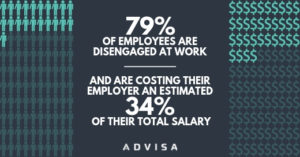Maximize talent by making it a budget priority
It’s budget season. What are you buying in 2020?
The vast majority of you are planning those investments now. The tools we buy will help us get our jobs done, no doubt. But it’s people who will make or break all those tools. How are you budgeting for your people?
For many small and medium-sized businesses, their biggest expense is payroll and they spend most of their money on people. Interestingly, of all the expenditures, these companies tend to have few data points around how to optimize their people’s performance. For many, the best metric they have is turnover but those numbers are too little, too late.
Time to Optimize
We know there’s a renewed focus on proactively optimizing talent through better hiring, engagement, and retention, and that people data is integral to understanding impact.
Yet, the biggest obstacle is getting investment.
“It really is a head-scratcher,” said Greg Barnett, an expert on optimizing performance at The Predictive Index in Westwood, Massachusetts. “Why is the need to invest in talent optimization and people analytics still not obvious to the financial decision-makers?”
When we collect data to predict fit and pull that data through the lifecycle of the employee, we can better develop leaders and design teams, drive intentional culture, and produce high-engagement workplaces. This will increase your profitability. And ensuring your teams are ready, willing, and able requires an investment.

It Pays to Engage
What happens when organizations connect their people data to their business strategy? Barnett helped us aggregate some examples:
For consumer electronics retailer Best Buy, a tiny increase in engagement pays off big time. A longtime leader in predictive analytics, Best Buy analyzed its wealth of people data and discovered that a 0.1% rise in employee engagement resulted in an increase of more than $100,000 in annual income.
We all know that movie theater profits come predominantly from concessions, not the movies themselves. So, AMC Theatres dove in to see how employee performance affected its bottom line. People data analysis showed theaters with top-performing managers outperformed others to the tune of an additional $300,000 in annual sales.
A study by Glint revealed new hires with poor orientation experiences are eight times more likely to be disengaged at work. It showed that, over the course of a year, the regrettable attrition rate (the attrition rate of the people you don’t want to lose) is 12 times higher among disengaged employees. That means it can cost upwards of 150% of a mid-level employee’s annual salary to replace him or her. So can you imagine having to pay 150% of your best employees’ salaries 12 times over?
At the same time, McLean & Co. used people data to find that disengaged employees cost their company about 34% of total salary.
You can do the math for your own company. If your business has 100 employees, we can use data from the talent-management firm Achievers (which states only 21% of employees are very engaged), to calculate that 79 people are disengaged in their work. If their average salary is $47,000, their disengagement is costing you $1.26 million!
Plan for the Spend
Talent optimization should be a line item in your budget. Here’s what to include:
People data
- All business problems lead back to people problems. If you’re not collecting predictive people data before making business decisions, you’re behind. Being behind is expensive. Budget for data collection at the individual and organizational level. Invest in tools like The Predictive Index that help you make predictions around job fit, team fit, and manager fit.
Engagement data
- The radiologist reads your X-ray to confirm a diagnosis but that’s just step one. The story our engagement data tells is the proverbial “canary in the coal mine.” Choose a tool that lets you diagnose the four forces of disengagement in your organization, and make sure your partner is prepared to offer you an immediate action plan.
Leadership development
- Most managers were promoted based on technical competence but do yours have the connection competencies critical to motivate and lead others? Measure their emotional intelligence. Are your leaders ready, willing, and able to spring into action and achieve the results the business needs? How do you know? Measure their strategic alignment.
Reflect on what your people really cost and how much they’re worth, then budget for them. How much confidence do you have that what got you here will get you there?
This article originally appeared in the Indianapolis Business Journal on September 20, 2019.
Read More
Are you looking to use data to build your teams and optimize their impact? If so, check out Organization Design: Form Follows Function from ADVISA President, Heather Haas. In this article, you’ll learn the importance of assessing your senior leadership team to make sure their ideas align with the business strategy.
